I got a chance to drive Honda Twister on last Sunday morning. My friend owned a Grey Twister three weeks ago and we were waiting for RTO registration till date. I had driven it for 60 kms including city roads and highway with two halts. So here I am presenting my review for little Honda Twister.
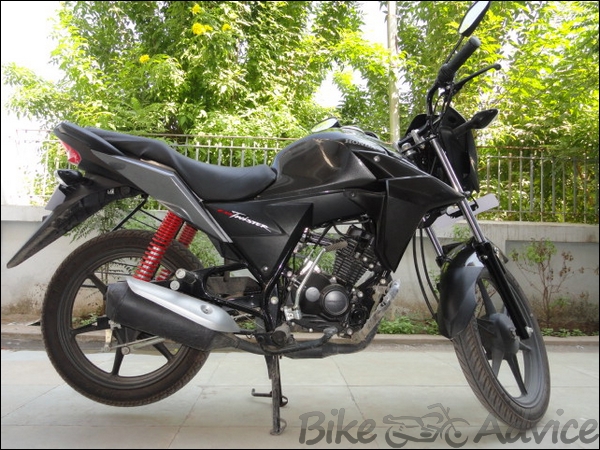
Engine and Transmission
It falls into 110 cc segment. The engine produces sufficient power to roam in the city with this 110 cc capacity. Engine looks very tiny and engine compartment almost appears roomy. That helps in improving the cooling of engine. Heat generated from the engine during long journey is in moderate region in comparison with other bike in this segment.
Twister is having longest inlet manifold in 110 cc segment with decreasing cross section towards engine inlet. This cross section helps to create better swirl in the inlet manifold to mix the petrol with air. Another attractive feature of this bike is recirculation of exhaust gases into the cylinder. This high temperature exhaust gases help to improve the initial vaporization of petrol in the inlet manifold itself.
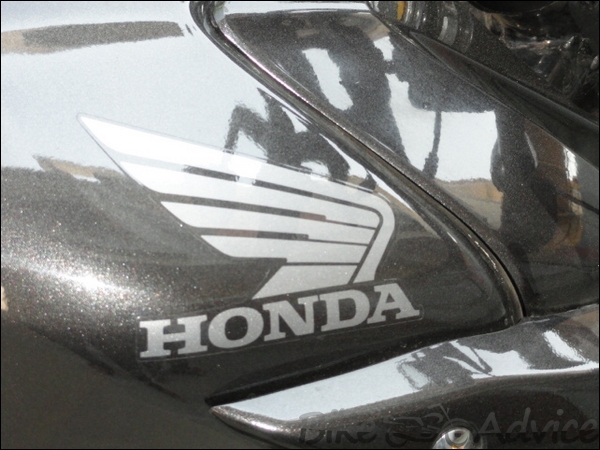
Then this vaporized mixture of air and petrol is supplied to the cylinder for further vaporization. This is done with the help of small EGR unit embedded in space above the engine. A vacuum pipe from inlet manifold is connected to the diaphragm of EGR unit. The vacuum in the inlet manifold controls the opening of diaphragm valve.
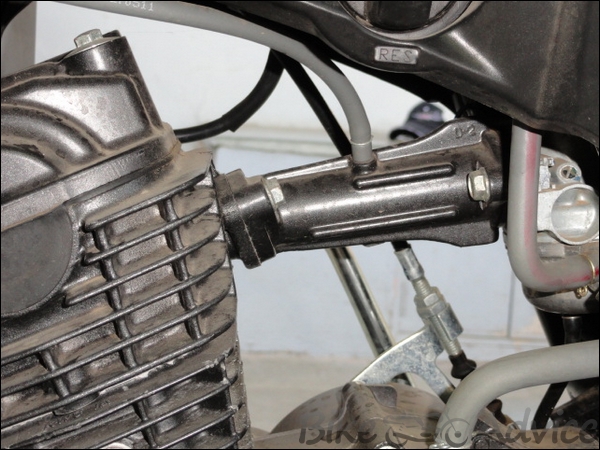
Vacuum created in the inlet manifold is the only factor that decides how much exhaust gases should be circulated in the circuit (Obviously the total quantity is very small because of small engine capacity). You can observe one pipe connection coming out from cylinder block of Twister nearer to exhaust port. This connection takes the exhaust gases from the manifold and delivers it to the EGR unit.
After sufficient opening of the diaphragm valve, exhaust gases are propelled up to the air filter. The wet type air filter removes the heavy carbon and dust particles from the exhaust gases. After passed through a filter, the exhaust gases are mixed with the fresh air and petrol in the carburettor and sent to the cylinder. With the help of these two astonishing stuffs, my friend is getting fuel consumption of 68 kmpl in his Twister.
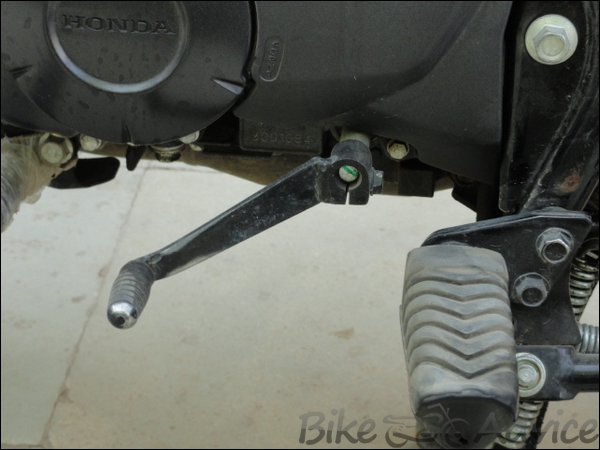
Engine runs very smoothly up to 60 kmph while driving with pillion and bike preserves its name “Twister”. After 60 kmph, engine becomes bit hard and generates some juddering and noise. I guess, Twister can maximum go up to 90 kmph. Transmission is one of the best attractions of this bike. The gear shifter travel is very small and gear shifting is very easy. Clutch lever travel is also very small.

In combination, both the levers reduce effort to shift the gear. We can say a perfect butter smooth shifting. I personally feel that the clutch free pedal is diminutive. This tends to wear the clutch plates earlier than normally does. With 110 cc engine capacity, Pick up of the bike is just up to the mark. You can observe a small oil leakage from top up cap during these 60 kms in one of the photo.
Rating for Engine and Transmission:![]()
Handling and Balancing
Handling and balancing of the bike depend on CG point, weight, tyres, suspensions, frame construction, wheelbase, and steering geometry. Twister is noticeably very light weight machine: thanks to optimized double cradle diamond type steel tubed frame and FRP parts. Optimization of the frame is exposed at the axle of swing arm mounting.
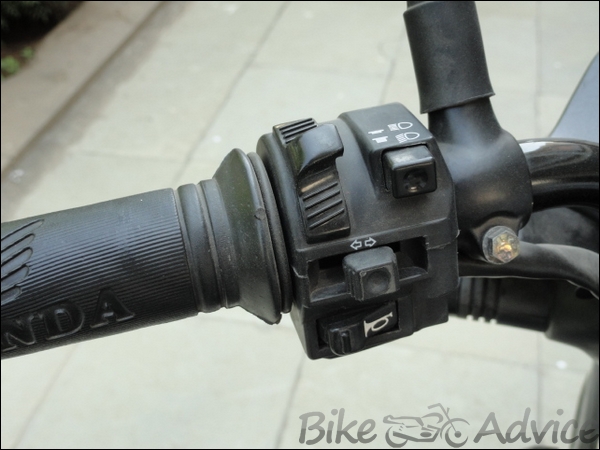
A unique sectional element is used at this mounting instead of using heavy fabricated steel stripes. Many other locations are there to observe the light weight frame construction. Also the engine compartment is very spacious. This tends to shift the CG bit high. As the CG is at considerable height, it is difficult to retain the balance constantly.
That is why you have to move the steering constantly from one side to another in dense traffic. The steering system is also bit light weight than other bikes; it is easy to shift the steering from one side to another. Steering geometry is perfectly designed for driving in city. Wheelbase is small which opposes the longitudinal stability of the bike because of which Twister is not suitable for highways.

Besides this, short wheelbase helps to prevent the long turning radius and pitching of the bike. That’s why; Twister becomes most favourable bike for city roads. I think rear tyre is over optimized for improving mileage. Too thin tyre losses its grip at the time of sudden acceleration as well as on the wet roads. This tyre serves sufficiently during normal ride.
Rating for Handling and Balancing:![]()
Braking and Acceleration
Acceleration of Twister is just like a dirt bike. The front wheel easily gets lifted a little if you don’t synchronise between clutch release and accelerator twist. It is not because of power developed by the engine, but because of torque delivered to the rear wheel through first gear reduction and chain drive reduction.
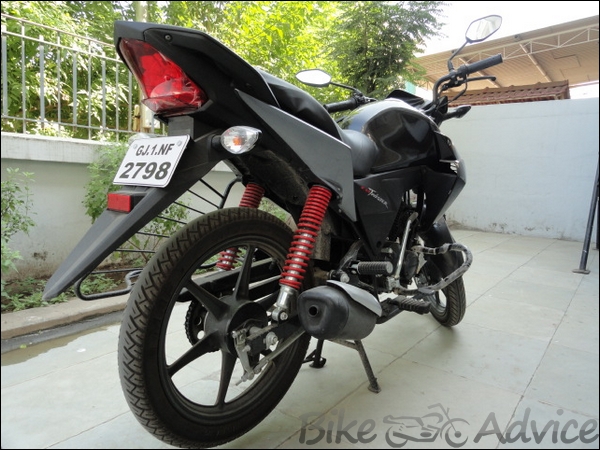
Twister is advisable to drive up to 15 kmph on 1st gear, up to 30 kmph on 2nd gear, up to 40 kmph on 3rd gear and above 40 kmph on 4th gear for better mileage and braking. Both the front and rear brakes are efficient for stopping the bike within 10 mtrs from 60 kmph.
Rating for Acceleration:![]()
Rating for Braking:![]()
Instrumentation and Control
Instrumentation panel comes with unique shape and checkered stickers but without any digital screen. Speedometer pointer vibrates too much because of which it is difficult to read the correct speed. Other instrumentation contains very basic stuffs like neutral indicator, side light indicator, high beam light indicator and fuel level indicator. These indicators are evenly distributed on panel.

Not a single control is provided on right hand side in basic model. All the controls are on clutch side. Deeper light switch is push button type which may has small life then the conventional one. Quality of the switches is not up to the mark and looks very dull.
Rating for Instrumentation:![]()
Rating for Control:![]()
Electricals
Head light looks attractive and sufficient capable to illuminate the road. Both the low and high beam filaments are incorporated in a single bulb.
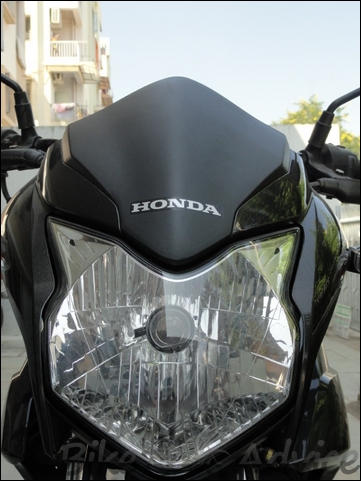
Tail light shape is also good and looks gorgeous at night. Side lights look very conventional. Horn is audible within 50 mtrs area in dense traffic.
Rating for Electricals:![]()
Ergonomics
Ergonomics deals with the ease of driver to drive and control the bike. The distance between steering handle and seating position is small. It is not advisable to drive Twister for long distance if you are having height more than 5ft 8in. You might get pain in your wrist, triceps and shoulders.
I think Twister has got stiffest kick ever in the history of Indian bikes. My friend has already registered his complain about kick at Honda head office. Honda people have started working on his complain. Controlling the Twister is not very big issue as the top speed and weight of the bike is in limit.
Rating for Ergonomics:![]()
Aesthetics
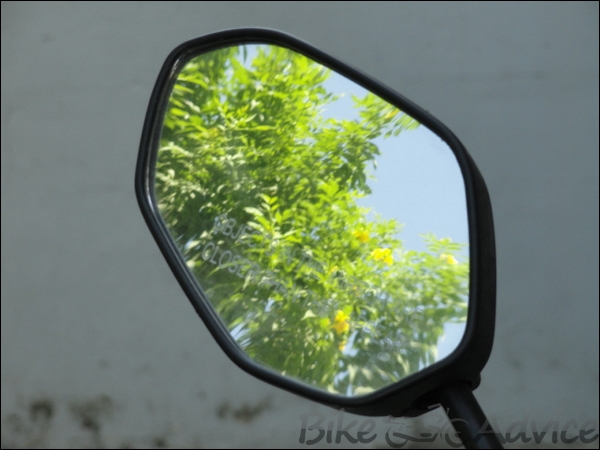
As per my opinion, Twister is the best looking bike with in 110 cc segment. Majority exteriors are made from FRP with pleasurably gorgeous shapes. Though it is a 110 cc capacity bike it appears muscular. Fuel tank along with the sharp knife edge cowls provide macho look to this tiny packet. Rear view mirrors are with twisted octagonal shape and look good enough. Paint quality is excellent unveils the Honda standards.
Rating for Aesthetics:![]()
Overall Rating and Summary (110 cc Segment)

The most worthy bike within 110 cc. Very light weight and just made for driving on the city roads. It is not at all suitable for constant long journey on highways because of small fuel tank capacity and small wheelbase. It is a machine with excellent aesthetics and better mileage. It costs between 51,000 (Basic model) to 54,000 (Top model).
Overall Rating: ![]()
Regards,
Dhruv Panchal

![Royal Enfield Guerrilla 450 Launch This Year [Speculation]](https://bikeadvice.in/wp-content/uploads/2022/12/Royal-Enfield-Hunter-450-pic-headlamp-100x70.jpg)
